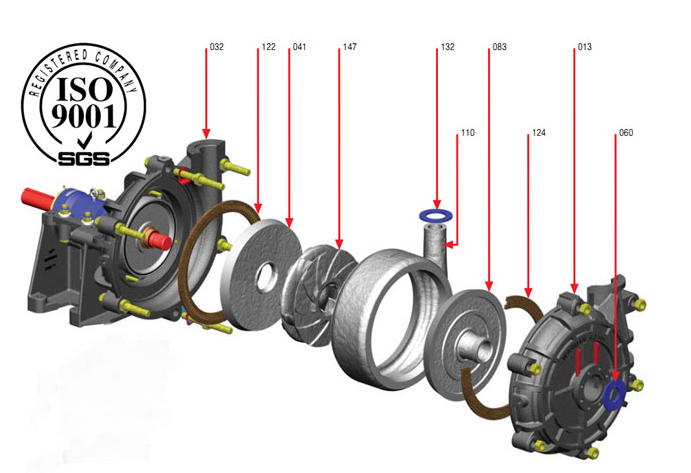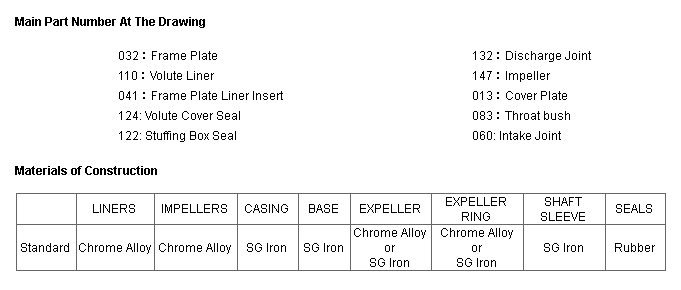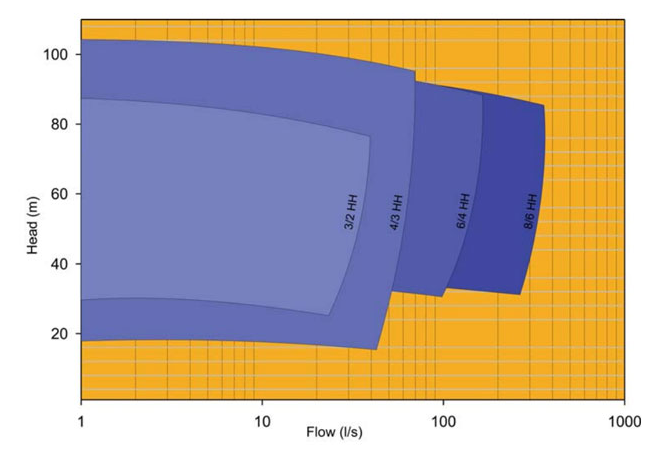In the rainy days when the last “Tianku†came, I thought about the bus ( sew-up trucks, suction trucks, garbage trucks, and sanitation workers cannot save the earth ). Garbage trucks, suction trucks, and sewage trucks changed. When the time after Chuanxiang’s era had made a tremendous contribution to our urbanization, our lovely humans were too powerful. The waste that we produced was far beyond their imagination. The problem with garbage siege is that they Can not solve the problem! Facts speak louder than words. Let's take a look at some of the information:
First, rubbish has swept the ground, surrounded by Chu singing
In terms of landfills, Guangzhou is now overwhelmed.
At the end of December last year, the reporter visited the “famous†Huogang landfill site in Panyu District, Guangzhou. Nearly every few minutes there was a stench-filled earth-moving vehicle that came into the factory. Along the way there were still scattered black paints. The name of the stolen goods. A person in charge of the factory, Li Xing, told the reporter, “I feel that this is no way at present. The ultimate way out of garbage is to burn or burn, but waste separation is a prerequisite.†It is understood that there is now 45 meters of garbage. At the most, the mountain will reach 60 meters at the most in five years, and 60 meters will be the limit of this field. At that time, the fire pit will have to be closed.
Guangzhou's "trash predicament" is the epitome of most cities in China. In today's 668 cities outside China's counties, two-thirds of the cities are surrounded by garbage. The accumulated land occupation of urban landfills in China exceeds 500 million square meters, and the economic loss is as high as 30 billion yuan each year. The accumulated amount of urban domestic waste in the country has reached 7 billion tons. In the periphery of the city, there has been a series of garbage dumps and even “garbage mountainsâ€.
Shen Jianshan, a research fellow at the Energy Research Institute of the Chinese Academy of Sciences, said that one-fourth of the country’s cities have basically no landfill sites. The problem of rubbish siege has been raised long ago, but it has not been effectively solved. Many cities have taken detours on the issue of garbage disposal. At that time, they simply piled and landfilled, which laid a hidden danger for future development. The pile of rubbish like a giant "bomb" lurks underground in the city. Therefore, if the large number of small and medium-sized cities in rapid development are not solved properly, the further development of the city will become difficult.
Chen Yong, director of the Municipal Administration Committee of Beijing Municipal Administration, stated that Beijing currently produces 18,400 tons of waste per day, and the daily processing capacity of existing waste treatment facilities is only 10,400 tons. The garbage disposal facilities are all overloaded and the overload rate reaches 67%. . In a maximum of four to five years, the landfill will be overwhelmed and the waste will have no place to fill.
Guangzhou, which is in the forefront of public opinion due to strong opposition from the garbage incineration project, is also facing a severe “junk crisisâ€. Since 1999, the total amount of household garbage in Guangzhou has doubled in a decade. Currently, there are nearly 18,000 tons of domestic garbage produced every day, and there are still 12,000 tons of domestic garbage that have been processed in the end. This figure is still growing at a rate of 5% to 7% each year.
“The two existing landfills will be filled and closed at the latest by 2012. If no new waste treatment facilities are built, no more than 10,000 tons of waste will be disposed of in Guangzhou each day. Faced with the "garbage siege" huge crisis." Lu Zhiyi, deputy secretary general of the Guangzhou Municipal Government said in an interview.
At present, almost all major cities in the country are facing the same dilemma. Shenzhen has produced more than 12,000 tons of waste per day. Its incineration treatment rate is over 43%, and land tension is more severe than that of Guangzhou. Every day, Nanjing City, which produces 4,500 tons of garbage, will have three landfills, namely Shuige, Jiaozishan and Tianjing, which will soon be saturated and closed. Among them, the Tianjingyu landfill site has been heavily overloaded. If no new waste treatment facility is built, the 1,000-ton domestic garbage generated in the Jiangbei area of ​​Nanjing will not be able to dissipate.
In some townships in the Pearl River Delta region, the predicament of nowhere to deal with waste has become increasingly prominent. In Humen Town, Dongguan City, an industrial town that was once famous for the non-smoking Lin Zexu, has now become garbage. The landfill site at Dalingshan Forest Farm in Humen Town occupies an area of ​​160 mu. Today, based on the surface of the Pearl River, the “garbage hill†has reached 82 meters.
Second, garbage incineration: public sentiment
From Liulitun in Beijing to Shanghai Jiangqiao, from Nanjing Tianjing to Wujiang in Jiangsu, in recent years, the “blossom†anti-cigarette incineration protests have made the environmental impact assessment of waste incineration projects around the world have become almost insurmountable. "Chasm." Environmental assessment requires public participation and opposition from the surrounding people. EIA is almost impossible to pass. After strong opposition from the Nanjing Tianjing Waste Incineration Power Project, Zhang Dongmao, director of the Nanjing City Appearance Authority, said that the current situation is that waste incineration cannot be moved, but what is even worse is that “we can’t afford to delay the results. It is the people's living environment that will be affected.â€
Yang Chaofei, former director of the Department of Policy and Regulation of the Ministry of Environmental Protection, revealed that the current environmental situation in China is facing a new feature of rising environmental risks, frequent environmental accidents, and increased number of group incidents. Yang Chaofei said that under the general background that the local environment has improved and the overall environment is still deteriorating, the number of environmental reconsideration cases in China has risen sharply. "It is expected that in the coming period, the reconsideration case will also show a rapid upward trend." Yang Chaofei said that at present, the environmental protection issue is ranked ninth in the top 10 reasons for the current national group incident, and the growth rate of mass incidents caused by environmental pollution. Ranked seventh, its annual growth rate of 29.8%.
Dioxin has always been the focus of the dispute over waste incineration plants. It is an internationally recognized class 1 carcinogen with a toxicity equivalent to 900 times that of arsenic, and waste incineration produces this substance. It is also out of this concern that residents of Beijing Liulitun, Shanghai Jiangqiao, and Guangzhou Panyu all opposed the construction of waste incineration plants in the form of mass incidents.
According to Chen Zefeng, chairman of the board of directors of China and Germany, the technology for controlling dioxin is very mature. As long as the temperature, time, and turbulence are controlled, the flue gas stays in the furnace above 850°C for more than two seconds, and dioxin can be basically eliminated. On May 27, 2010, the National Environmental Analysis and Testing Center issued a test report to Fuqiao: Its dioxin emission was 0.034 ng/m3, not only lower than the national standard of 1 ng but also lower than 0.1 ng. EU standards.
Although the technology is mature, the problem exists. At present, more than 80 waste incineration power plants operating nationwide have been exposed more than once. Whether or not companies can effectively restrain companies is one of the public’s long-standing concerns.
Xu Haiyun, chief engineer of the China Urban Construction Research Institute, told the reporter that there are two unfavorable tendencies in China's existing waste incineration plant. First, some places have spent huge sums of money on the introduction of advanced equipment and the operation and management level is very low, resulting in unqualified emissions. The second is that some companies “pick up dog meat†and use the signs of waste incineration. What they actually do is “small thermal power†that is prohibited by the state. Xu Haiyun believes that the above problems do not mean that waste incineration plants cannot be effectively supervised. Xu Haiyun suggested that the government and enterprises perform their duties strictly and strengthen their credibility.
III. Hengxian County, Guangxi Province: Cracking the County Sample of “Rubbage Fortress Cityâ€
At present, not only major cities like Beijing and Guangzhou are facing the grim situation of “garbage siegeâ€, but many small and medium-sized cities are also plagued by this problem. A half-monthly reporter interviewed in Hengxian County, Guangxi Zhuang Autonomous Region, learned that after 10 years of exploration, this county has gradually established a waste classification, collection and processing network covering the urban area. At present, more than 70% of wastes have been recycled, which has yielded three major achievements: beautiful environment, economic development, and social harmony. It provides a real sample of the problem of cracking the garbage.
10 years of exploration brings great changes to the environment of small towns
Heng County is located in the southeast of Guangxi, with a population of 1.15 million, a county area of ​​16.3 square kilometers, and a population of 102,000 in the urban area. Due to its unique natural conditions, Heng County has become the largest jasmine production and tea processing base in the country and has been named “Hometown of Chinese Jasmine†by the State Forestry Administration and China Flower Association.
However, for a long time, because of the ineffective treatment of garbage, Hengxian City has always been “sweetâ€. According to Chen Hong, deputy director of the Heng County Environmental Protection Bureau, with the economic and social development of Hengxian County entering the fast lane in the 1990s, “the city’s population has gradually increased, the circulation of goods has become more frequent, and there has been more wasteâ€. During this period, the daily production of domestic garbage in the urban area of ​​Heng County soared from the previous more than 10 tons to 670 tons, and grew at a rate of about 5% per year.
Chen Hongwei, who worked in the environmental protection department of Hengxian County for more than 20 years, said that in the past, the sanitation department used to directly pull waste into the farmland and used it as fertilizer. “But as the waste composition gradually becomes more complex, more and more farmers are unwilling to accept it. These rubbish."
He Feng, deputy head of Hengdian sanitation station, introduced: “At that time we did not know where to put the garbage that was cleaned out every day. We could only pull it in remote mountainous valleys for simple landfill.†Later, as the amount of garbage increased, the main street There was a lot of trash everywhere. "Sometimes I can't stand it anymore, just let it go and burn it." He Feng said that this small county, which was originally surrounded by mountains and rivers, was made a mess by the garbage. Therefore, how to deal with the increasing amount of garbage has become a headache for Hengxian.
In 1994, the State Education Commission (now the Ministry of Education) and the Education Department of Guangxi Zhuang Autonomous Region recommended that the International Institute of Rural Reconstruction of the Philippines (IIRR) sign an agreement with Hengxian County, and IIRR will implement “Intended to improve farmers’ survival skills and The basic quality of "civilian education."
Zhang Lanying, who was then the China Coordinator of the IIRR project, said that the local environmental protection department, which was suffering from garbage disposal, had found the IIRR project team to ask about the Philippines’ advanced waste disposal experience. In the end, they included the waste disposal work in cooperation and officially launched the project in 2000.
10 years of waste treatment and exploration made great changes in Hengcheng District. The reporter saw that the streets here were clean and clean, and many residents’ houses had plastic bags or plastic buckets used as garbage. Plastics, glass and other non-recyclable garbage are classified into one category, and domestic garbage such as fruit skins and vegetable stems are classified into another category. The clean environment has now become a business card for attracting foreign investment. At present, Hengxian County has formed three major trading markets including the jasmine market, the raw tea trading market, and the finished tea market. Tea companies from Fujian, Yunnan, Guizhou, Hubei, Zhejiang, and Anhui gathered here, and each of the three major markets The turnover is about 50,000 tons and the transaction volume is more than 1.3 billion yuan.
Garbage trucks, suction trucks, and sewer trucks have changed history, but they cannot change the status quo! How can we solve the disaster of the garbage siege?
1. Naipu HH serieshorizontal Slurry Pump are designed to produce high head per stage at high pressures.
commonly used for long distance transport lines, the NP-HH lines can
often satisfy application duties with a single pump where others require
multiple pumps.the range is capable of handling medium size particles
and pumping at heads in excess of 90 meters per stage.
Typical Applications---
Tailings Delivery
Cyclone Feed
Diamond Concentrate
Slag Granulation
Bottom Boiler and Fly Ash
Mill Discharge
2.Construction drawing of HH series Horizontal Slurry Pump


3.Select chart of HH series horizontal slurry pumps

4.HH series slurry pump performance parameters

HH High Head Horizontal Slurry Pump
HH High Head Slurry Pump,HH Slurry Pump,High Head Pump,HH Pump
Shijiazhuang Naipu Pump Co., Ltd. , http://www.naipu-pump.com